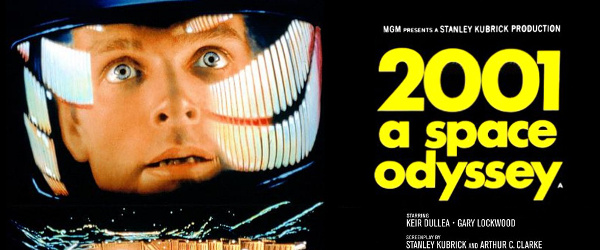
The history of UK cinemas love affair with technology arguably starts with what BFI.org placed at number six in its Greatest Movies of all time: Stanley Kubricks’s 2001: A Space Odyssey. This is the film in which IT was key both to the production and to the plot line.
The story was written by author Arthur C. Clark, a scientist who helped invent radar in WWII and who consulted on the film when the computer takes over the mission.
The mainframe computer in question was named HAL and although he never confirmed that name was associated with a real company, many observers felt it was too much of a coincidence that simply by taking each following letter in the alphabet in the name HAL, one arrives at the name of a well known IT firm.
England set the stage for Kubrick’s epic sci-fi movie, with principal photography starting on December 29, 1965, in Stage H at Shepperton Studios. The studio was chosen because it could house the 60’x 120’x 60′ pit for the Tycho crater excavation scene, the first to be shot.
The lasting impact on the world of technology? Well, many point to HAL as the inspiration for Apple’s Siri – with Siri herself said to utter references from the film, responding "I’m sorry I can’t do that" when asked to "open the pod bay doors".
Just 9 years later, the UK would again set the stage for what has become one of the biggest, most lucrative and most followed movie franchises in cinema history – Star Wars.
With pioneering digital motion control photography developed by John Dykstra, the controlled setting of Elstree Studios, near London, provided one of the only stages that could cater nine large stages at the same time and allow the company complete freedom to use its own personnel.
Unlike Kubrick’s HAL, the influence on tech has yet to emerge in the mainstream, – so ahead of its time that spaceships, aliens and light sabers are still science fiction.
More recently, and still in the realm of a galaxy far, far away, director Alfonso Cuaron chose to shoot the CG elements of the acclaimed film Gravity at Pinewood and Shepperton Studios.
IT expertise was injected into the film with the visual effects supervised by Tim Webber at the London-based VFX company Framestore, which was responsible for creating most of the film’s visual effects.
The UK film industry has a fantastic pedigree in special effects (FX) and in post production. Take the company Double Negative, boasting two BAFTAs for its work on Harry Potter and the Deathly Hallows Part 2 (2011) and Inception (2010).
The British full-service visual effects/computer animation company, founded in 1998, has grown from a team of just 30 to an organisation with offices in London, Singapore and Vancouver.
But it is not all about Sci-Fi. The UK has an envious history of pioneering inventors. Bell, Babbage, Berners-Lee, Trevithick, Whittle – there is an exhaustive list of inspiring individuals in which to place at the core of a biographical plot. This year sees The Imitation Game up for a BAFTA for best picture. The film stars Benedict Cumberbatch as Alan Turing, the father of modern computing who built the first computer to break the Enigma code in WWII.
At an infrastructure level, IBM announced this week that Sohonet, which provides connectivity, data management, storage and compute solutions for the UK film industry has chosen data centre services from Softlayer.
The Sohonet Media Network is the largest and most established private, high-performance network for the media and entertainment industry connecting the leading studios, production and post-production facilities across the globe and providing high-speed access to established and emerging cloud platforms.
The technical expertise and tech talent of the UK has certainly combined with the film industry to produce work that has not only entertained, but influenced and inspired future technologies. Who knows what this special relationship will produce in the future? If 2001: A Space Odyssey, Star Wars and The Imitation Game are anything to go by, we can be sure to look forward to future cinematic and technological masterpieces – continuing to set the standard for the rest of the world.
Co-authored by Ambrose McNevin


